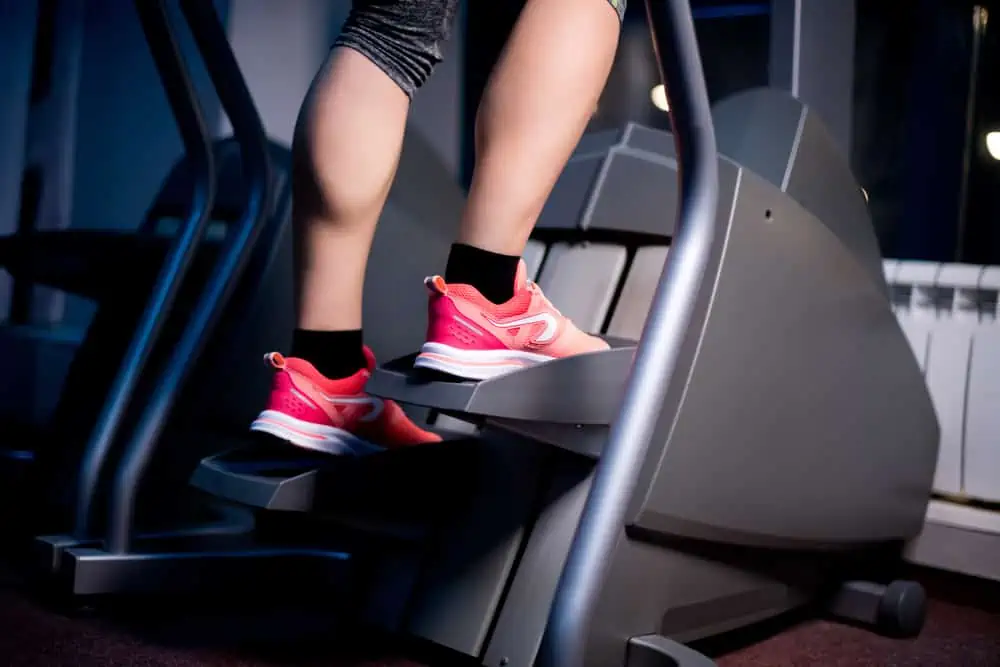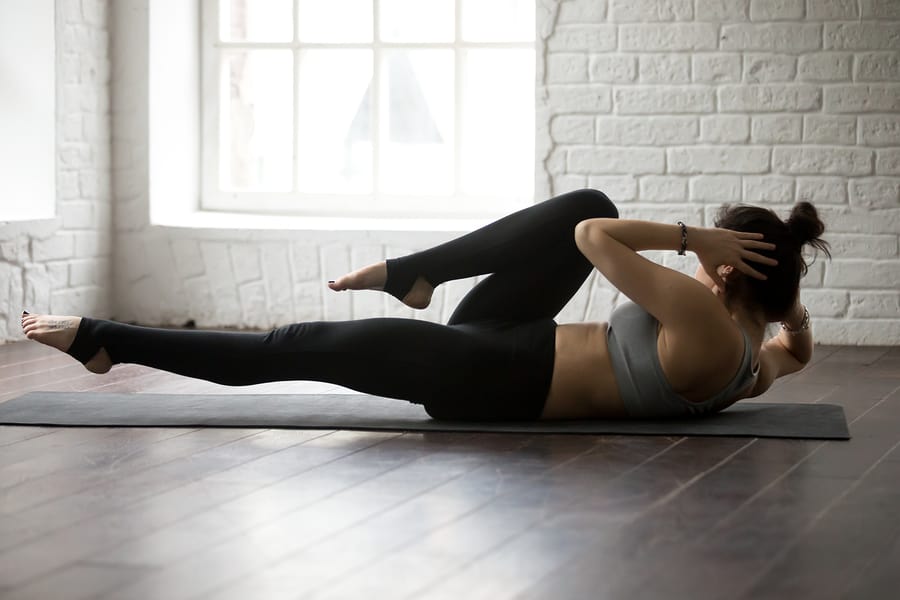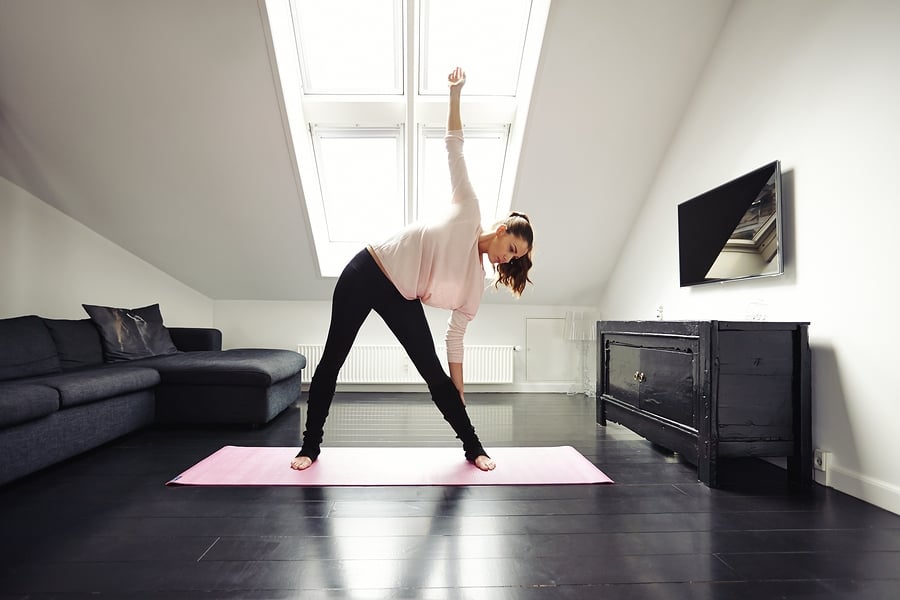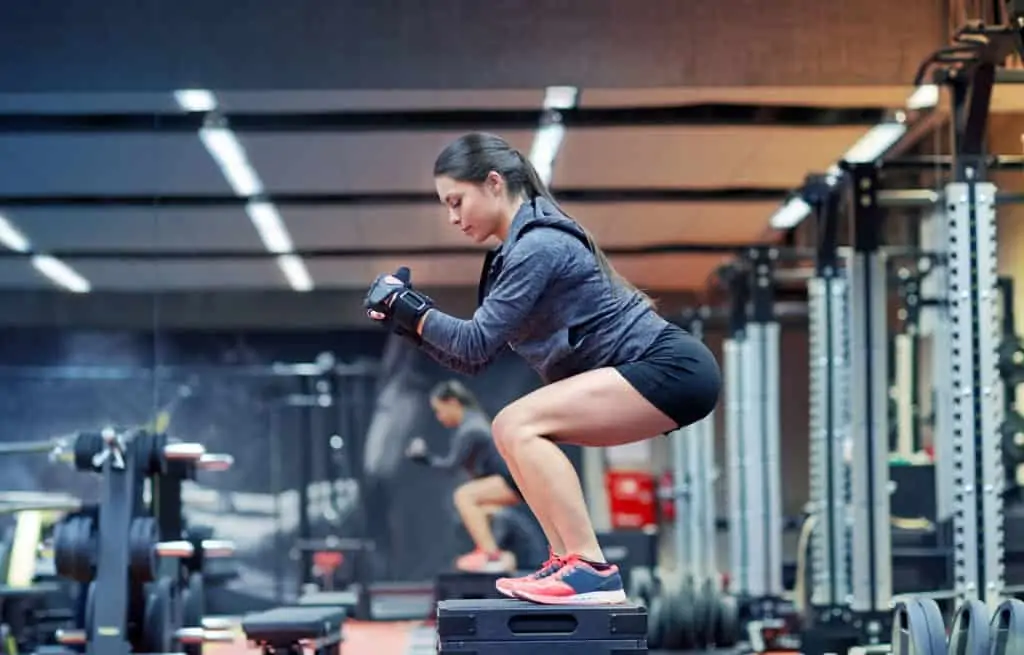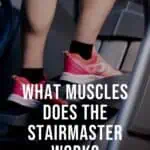This post may contain affiliate links. If you click through a link and make a purchase, I may receive a commission at no additional cost to you. As an Amazon Associate, I earn from qualifying purchases. Read the full disclosure here.
A Stairmaster workout targets the major muscle groups of the lower body, including the calves, quadriceps, hamstrings, and glutes. Not to mention, it’s a fantastic low-impact cardio option for cardiovascular fitness.
Let’s take a deeper dive into which muscles get the most work and how to maximize the benefits of Stairmaster.
Disclaimer: This content is for educational purposes and is not medical advice. Read the full disclaimer.
The calves
The calf muscles are located at the back of the lower leg and function to help you rise up on your toes as well as help keep you balanced.
Two muscles (the gastrocnemius and soleus) fuse into the Achilles tendon to attach at the back of the heel.
During walking or climbing stairs, the back leg pushes through the calf muscles to assist with propelling you forwards and upwards.
A common mistake is staying on your toes the entire time.
Driving through the heel encourages better glute activation further up the chain and can help avoid ankle/foot irritation from improper movement patterns.
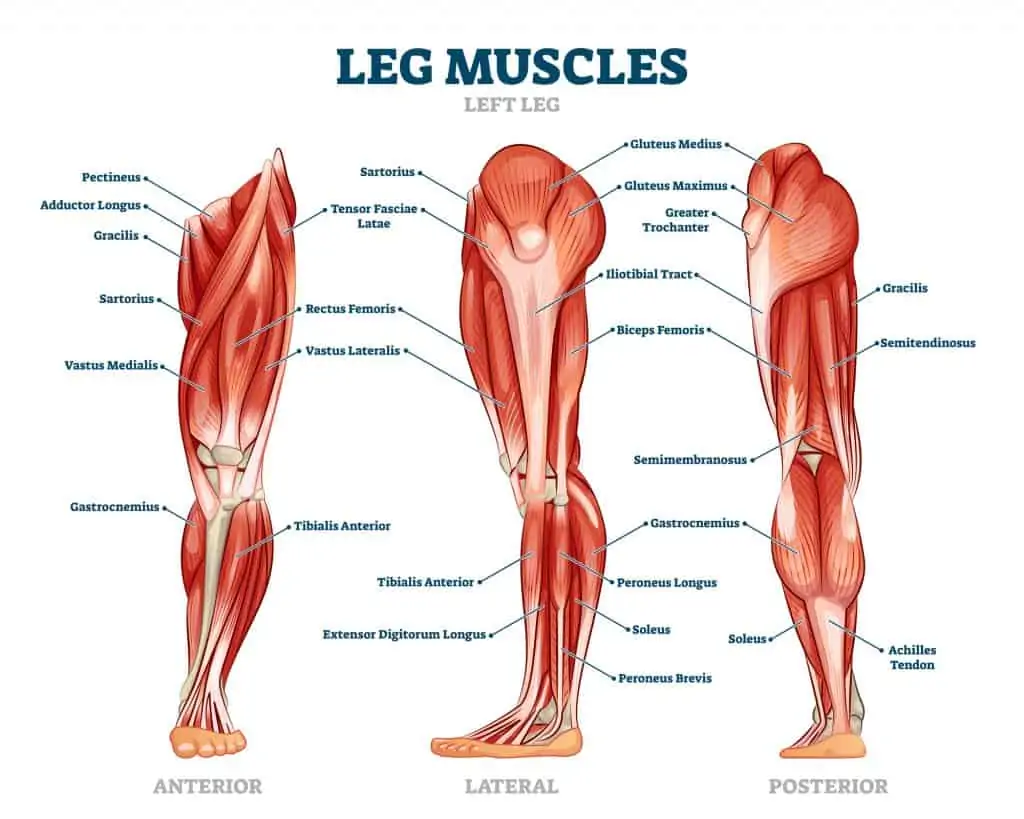
The quadriceps
The quadriceps are the large muscle group at the front of the thigh. They’re made up of four muscles and primarily function to extend the knee and assist with the step-up movement.
The quads get a lot of work on the Stairmaster as you climb. The higher the step, the more work the quads and glutes need to do to lift your body up to the next level.
The hip flexors
The psoas and iliacus muscles (iliopsoas collectively) are the primary hip flexor muscles. Every time you lift your knee to climb up to the next step, you work these muscles.
To avoid potential low back discomfort, be sure to stand up straight with good posture as you lift your leg up to the next step. This helps provide the hip flexors with good mechanical advantage and avoid compensations with the low back that can lead to pain.
Related read: What Causes Tight Hip Flexors?
The glutes
The glutes are the strongest, most powerful hip extensor in the body. Step-ups or climbing stairs is a great way to work the glutes.
Focus on driving through the heel and avoid pulling with your arms for maximum glute activation.
Unpopular opinion – ditch the kickback movements that are so popular these days. Yes, you may have seen a fitness influencer doing it, but that doesn’t mean it’s a good idea or that it even targets what you think.
Not only do most people end up arching the spine and dumping the movement into their low back, but if you’re really trying to strengthen your glutes, there are better ways to it that actually work.
For strength gains that you can see and feel, you need to apply load and be working against resistance, not just flailing your legs around on a cardio machine. Actual strength training is a much more efficient route.
For more super common stair climber mistakes, read this article.
The hamstrings
The hamstrings are a group of three muscles located at the back of the thigh. Their primary function is to bend the knee and assist with hip extension.
Due to their anatomical location and multiple jobs, they are not as strong as the glutes for extending the hip.
With walking or climbing, the hamstrings also help to control knee extension throughout the movement cycle.
The heart & lungs
The Stairmaster is an excellent aerobic activity to improve your cardiovascular fitness. This machine can help get your heart rate up quickly and yet still be a low-impact option that’s easy on your joints.
Breathing capacity increases with heart rate and brings additional oxygen into the system for the heart to then pump out to the rest of the body, delivering vital energy and removing cellular waste products.
The stair climber is a great way to make progress toward the healthy recommendation of at least 150 minutes of moderate-intensity exercise each week for health benefits.
Stairmaster do’s and don’ts
- Stand up straight with good posture
- Don’t slump over the stair climber machine and pull yourself up with your arms – not only does this encourage poor posture, but it also decreases the benefits for lower body work as well as total calories burned
- Do try different speeds and intervals for an added challenge
- Use your entire foot. Avoid climbing up on your toes as this decreases the benefits for the posterior chain muscles as well as has the potential to aggravate the calves, achilles tendon, and foot.
Don’t miss 4 Stair Climber Mistakes You Need To Stop Making
Stair climber vs. stair stepper
A stair climber looks like a staircase that rolls around the machine for you to keep climbing. This is also sometimes called a step mill, and names may vary based on brands.
A stair stepper has pedals that you pump up and down, but you’re really just sort of marching in place unless you take the machine up to a high setting.
Sometimes people refer to both of these machines as a Stairmaster, but Stairmaster is really just a brand that makes these types of fitness machines. It’s like saying “Kleenex” instead of tissue.
Which type of machine is better?
They both have cardio benefits; however, a stair climber has the potential to work your muscles better in a more functional way and better mimics stair climbing motions.
The range of motion is also consistent from one step to the next with the stair climber type machine. With a stepper, the faster you go, the less range of motion you’ll work through. This method will still get your heart rate up, however, it may have fewer benefits for lower body strengthening due to working through a smaller range of motion.
Stairmaster benefits
- low impact, high cardio workout
- Great for weight loss, lower body strength, and endurance
- Functional fitness (mimics a real-life activity)
- Can accommodate any fitness level
There’s always a way to add more challenge to your Stairmaster workout. Try a stair climber HIIT workout on Aaptiv to make your workout less boring.
Wrapping up
The StairMaster machine is a great way to work your leg muscles and get cardiovascular benefits.
Follow these tips to get the most out of your workout.

